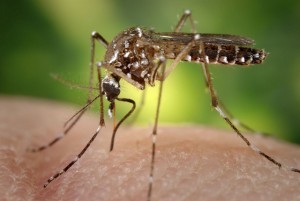To many people, dengue, like cholera and tuberculosis, seems to be one of those diseases from the days of yore. This may be because dengue made its greatest marks on global history during WWII, when mass movements of troops across the Pacific Theatre facilitated the spread of the disease. But that was over 70 years ago, a time of which few of us have any living recollection. More recent outbreaks of dengue rarely draw the same media attention that outbreaks of diseases like avian flu or swine flu do, so many of us go about without any awareness of dengue.
Dengue, is indeed, however, an issue to pay some heed to. The World Health Organization estimates that 50 to 100 million people are infected by dengue each year. 40% of the world’s population (or roughly 2.5 billion people) are at risk for contracting the disease. 20,000 die of dengue annually, many of them children. Although it is mainly found in tropical climates, there have been a growing number of cases in the U.S. and Southern Europe as well. Southeast Asia has been especially susceptible to the disease. Overall infections in Southeast Asia have gone up from last year, with Cambodia experiencing a fourfold increase in cases and Laos, Malaysia and Philippines experiencing increases as well. Singapore and Vietnam have reported fewer incidents as compared to this time last year.
Dengue is dangerous for a number of reasons. For one, it’s asymptomatic. After being infected by the virus, most people don’t experience anything for 1 – 3 days. To some people, dengue might be benign and never develop to anything beyond a mosquito bite. But for others, it could lead to skin rashes, headaches, debilitating muscle and joint pains and death. Aside from being particularly insidious, there’s also no specific medication, no cure and no vaccination for dengue.
But across the world, many countries and pharmaceutical companies are working on a vaccine for dengue. This includes the French-based pharmaceutical company Sanofi, currently running clinical trials in Thailand; U.S.-based Merck testing in Hawaii; and the National Institutes of Health working in collaboration with Biological E and Panacea Biotec in India; Butantan in Brazil; and Vabiotech in Vietnam.
Of these developers, Sanofi appears to be the closest to completion. Sanofi is currently in its third phase of trials, and the results of this third phase are expected to come out this September. If the results are positive, the vaccine could be fully launched by 2015, helping prevent 100 million new cases of dengue each year. Duane Gubler, a dengue researcher with the Duke-NUS Graduate Medical School, predicts that the vaccine will have a 75% – 80% efficacy rate, meaning there will be a 75% – 80% reduction in the prevalence of infection among those who are vaccinated. If successful, Sanofi’s next step would be to produce vaccinations that are affordable to impoverished citizens of developing countries.
Regardless of where exactly the dengue vaccine is ultimately created, let’s hope we can find an effective treatment for this disease.
Photo by Sanofi Pasteur via Flickr (Creative Commons)




